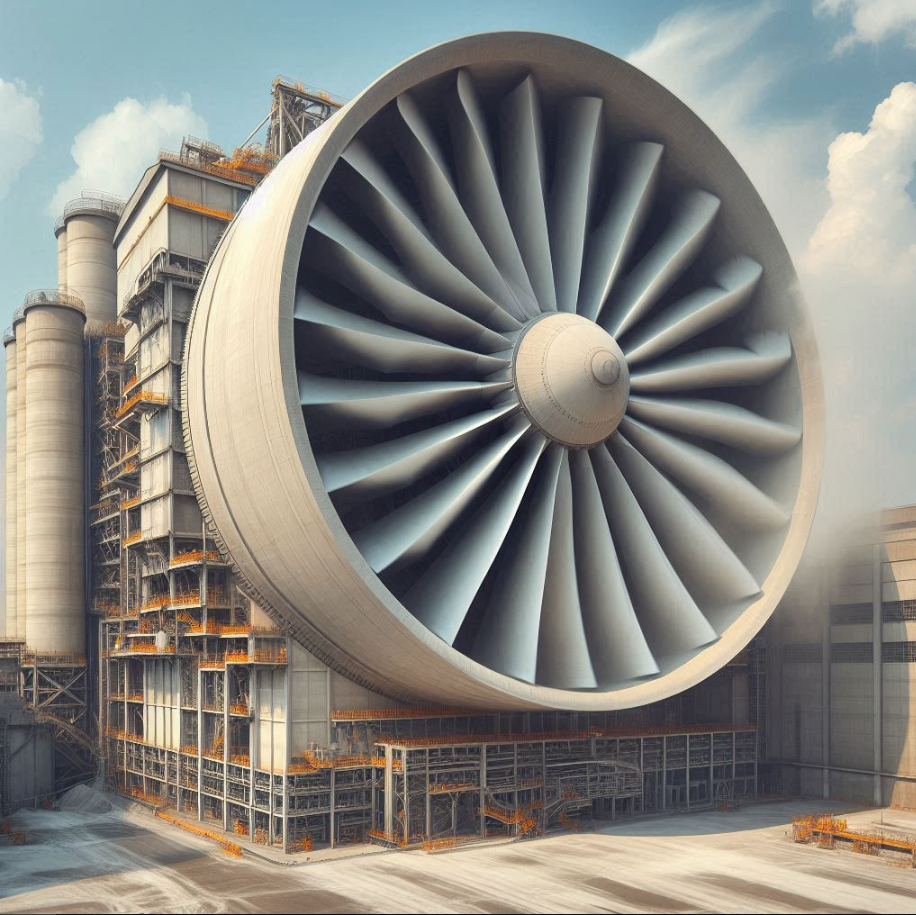Contents
Comprehensive Report on Fans in Cement Factories
TO Download this post and all the books and excel sheets and my personal notes and presentations I collected about cement industry in the last 30 years click the below paypal link

Introduction
Fans play a crucial role in cement factories, ensuring proper ventilation, dust control, and process efficiency. Various types of fans are used throughout the cement manufacturing process, each serving a specific function. This report will cover the most important fans used in cement factories, including example brands and models, their capacities, estimated prices, roles, and maintenance guidelines. Additionally, we will explore new trends in fan predictive maintenance.
Types of Fans in Cement Factories
- Kiln ID Fans
- Preheater Fans
- Raw Mill Fans
- Clinker Cooler Fans
- Baghouse Fans
Kiln ID Fans
Role
Kiln Induced Draft (ID) fans are crucial for maintaining the desired airflow and pressure in the kiln, removing combustion gases, and ensuring optimal combustion.
Example Brands and Models
- FL Smidth: AFT100
- Howden: TurboFan Series
- Siemens: VK 1400
Capacity and Estimated Prices
- Capacity: Typically ranges from 200,000 to 500,000 m³/h.
- Price: $50,000 to $200,000 depending on capacity and customization.
Preheater Fans
Role
Preheater fans are used to move hot gases from the kiln to the preheater tower, improving heat exchange efficiency and reducing fuel consumption.
Example Brands and Models
- Gebr. Pfeiffer: MVR series
- Reitz India: FKP series
- Cimpor Global Holdings: Preheater Fan PF-3000
Capacity and Estimated Prices
- Capacity: Ranges from 100,000 to 400,000 m³/h.
- Price: $30,000 to $150,000.
Raw Mill Fans
Role
Raw mill fans are used to supply air for raw material drying and grinding, ensuring the right airflow through the mill.
Example Brands and Models
- Alstom Power: 2G-50-14
- TMEIC: VF Series
- Venti Oelde: RMA Series
Capacity and Estimated Prices
- Capacity: 50,000 to 300,000 m³/h.
- Price: $40,000 to $120,000.
Clinker Cooler Fans
Role
Clinker cooler fans cool the hot clinker coming out of the kiln to a manageable temperature before further processing.
Example Brands and Models
- Centrifugal Fan Company: Model CF-500
- Greenheck: USF-250
- Yilmaz Reduktor: YR-8000
Capacity and Estimated Prices
- Capacity: 100,000 to 400,000 m³/h.
- Price: $50,000 to $150,000.
Baghouse Fans
Role
Baghouse fans are used for dust collection, maintaining clean air and environment in the plant by drawing out dust-laden air from various process stages.
Example Brands and Models
- Donaldson: Torit DFPRO
- Nederman: LCP Dust Collector
- AAF International: FabriPulse Fusion
Capacity and Estimated Prices
- Capacity: 50,000 to 200,000 m³/h.
- Price: $20,000 to $100,000.
Maintenance Guide for Fans
Routine Maintenance
- Inspection: Regular visual and auditory inspections for unusual noise, vibrations, and signs of wear or damage.
- Cleaning: Remove dust and debris from fan blades, housing, and other components.
- Lubrication: Ensure bearings and other moving parts are properly lubricated.
- Alignment and Balancing: Check for proper alignment and balance of fan blades to prevent vibrations.
- Filter Replacement: Replace or clean air filters regularly to ensure unobstructed airflow.
Preventive Maintenance
- Scheduled Downtime: Plan for periodic shutdowns to perform in-depth inspections and maintenance tasks.
- Component Replacement: Proactively replace worn components, such as bearings, seals, and belts, before failure.
- Vibration Analysis: Use vibration analysis to detect early signs of mechanical issues.
New Trends in Predictive Maintenance
- IoT and Sensors: Integration of IoT devices and sensors to monitor real-time data such as vibration, temperature, and pressure.
- Machine Learning: Utilizing machine learning algorithms to predict potential failures based on historical data and real-time monitoring.
- Automated Diagnostics: Advanced software tools for automated diagnostics and condition monitoring, providing actionable insights and maintenance alerts.
- Remote Monitoring: Remote monitoring capabilities enabling technicians to track fan performance from anywhere, facilitating proactive maintenance decisions.
- Digital Twins: Creating digital replicas of fans to simulate and predict performance and maintenance needs.
Conclusion
Fans are integral to the efficient operation of cement factories, each type serving a specific purpose in the production process. Proper selection, maintenance, and adoption of predictive maintenance technologies are essential for maximizing fan performance and longevity. The trend towards advanced predictive maintenance solutions, such as IoT integration and machine learning, is set to revolutionize how cement factories manage their equipment, ensuring higher reliability and lower downtime.
By understanding the roles, capacities, and maintenance requirements of different fans, cement factories can enhance their operational efficiency and reduce maintenance costs, ultimately contributing to more sustainable production processes.
